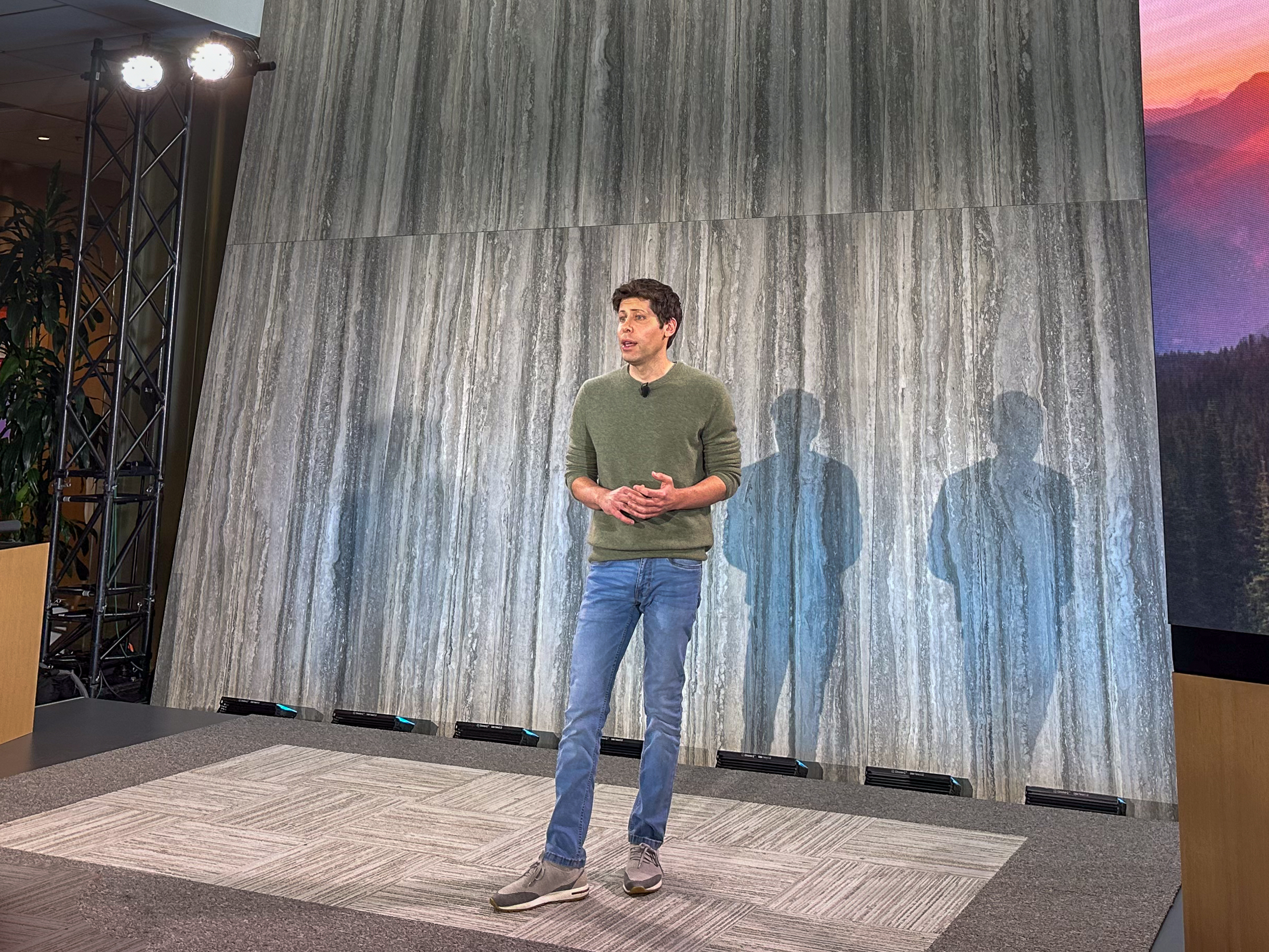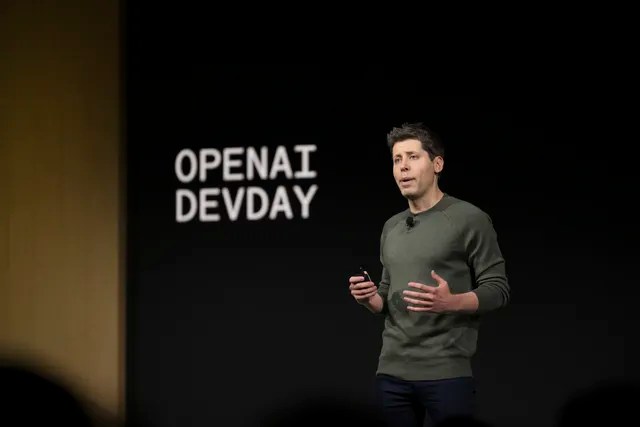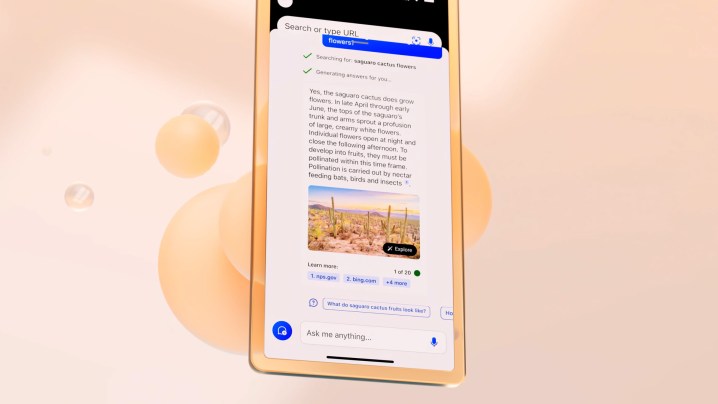
OpenAI kicked off a firestorm over the weekend. The creator of ChatGPT and DALL-E 3 ousted CEO Sam Altman on Friday, kicking off a weekend of shenanigans that led to three CEOs in three days, as well as what some are calling an under-the-table acquisition of OpenAI by Microsoft.
A lot happened at the tech world’s hottest commodity in just a few days, and depending on how everything plays out, it could have major implications for the future of products like ChatGPT. We’re here to explain how OpenAI got here, what the situation is now, and where the company could be going from here.
Now that OpenAI’s former CEO is at Microsoft — along with several former OpenAI employees — we could see products like ChatGPT disappear from the limelight. These models won’t go away, but with the major shake-up over the weekend, they may come in a different form.
Altman is out

Everything started when Sam Altman was removed as CEO of OpenAI. This decision came from the board of OpenAI, which, as of June 2023, had six members. Two of those members were Altman and former pesident and co-founder of OpenAI Greg Brockman, who quit following Altman’s removal.
Rightly or wrongly, the blame has landed in the lap of Ilya Sutskever, who, in the absense of Altman and Brockman, is the only employee of OpenAI still on the board. Sutskever also broke the news to employees that Altman would not return as CEO, reportedly causing dozens of employees (or more) to resign — more on that shortly.
Coming on a Friday before a holiday, it seemed like a rough bump that OpenAI would eventually iron out. The company announced Mira Murati, chief technology officer at OpenAI, would serve as interim CEO. And OpenAI’s biggest backer, Microsoft, reaffirmed its support. CEO Satya Nadella said “[we] remain committed to our partnership, and to Mira and the team.” Microsoft, up to this point, has $13 billion invested in OpenAI.
This setup didn’t last for long, though, as Murati was removed as interim CEO within a matter of hours. It’s not clear if Murati stepped down or if she was removed from the position. However, Bloomberg reports that Murati had plans to reinstate Altman and Brockman.
CEO toss-up
On Friday morning, Sam Altman was CEO of OpenAI. By Friday afternoon, it was Mira Murati. By early Monday morning, former Twitch CEO Emmett Shear announced he would be stepping into the post as interim CEO at OpenAI.
Shear provided some insight into what went down at OpenAI when announcing he would fill the roll. The executive announced he would take the position at on Monday, showing how quickly things have been moving at OpenAI. Shear says Altman wasn’t removed over “any specific disagreement on safety.” Shear laid out a three-point plan as CEO for the company that includes hiring an independent investigator to figure out why Altman and Brockman were removed, speaking to employees and partners, and reforming the management and leadership teams.
Shear did say he would make significant changes depending on how this investigation shakes out — “up to and including pushing strongly for significant governance changes, if necessary.”
Employee exodus
According to a report from The Information, trouble was brewing within OpenAI as CEO talks were ongoing. Murati was reportedly in talks to reinstate Altman and Brockman, and by the time Shear came on board as interim CEO, “dozens” of employees had resigned from the company. According to the report, these staffers were highly attractive to Google and Microsoft for their own AI initiatives.
These departures came over the weekend. On Monday morning, journalist Kara Swisher posted a letter from OpenAI employees to the board calling for their resignation. Swisher reports that 505 of the 700 employees at OpenAI signed the letter calling for the resignation.
The letter also provides some interesting insight into another development that happened on Monday. It reads: “We, the undersigned, may choose to resign from OpenAI and join the newly announced Microsoft subsidiary run by Sam Altman and Greg Brockman. Microsoft has assured us that there are positions for all OpenAI employees at this new subsidiary should we choose to join.”
That’s right — Altman and Brockman are now part of Microsoft, which is OpenAI’s largest investor. The partnership between Microsoft and OpenAI is critical, even if Microsoft doesn’t have a seat on OpenAI’s board. With employees threatening to leave OpenAI for jobs that are waiting at Microsoft, it puts the parent of ChatGPT in a tight spot.
Acquiring under the table
Altman and Brockman are now employees of Microsoft, and Microsoft says Altman carries a CEO title within the company. Microsoft CEO Satya Nadella announced the pair joined Microsoft on Monday, saying that they, “together with colleagues,” would lead a new AI research team.
Microsoft’s interest in OpenAI has been clear for years now. The company has reportedly invested $13 billion in OpenAI up to this point, with a massive $10 billion investment arriving toward the beginning of 2023. However, recent reports say that Microsoft didn’t actually give $10 billion to OpenAI. Instead, a large part of the investment came in the form of cloud computing purchases, presumably to run OpenAI’s models on Microsoft’s massive cloud.
In addition to Altman and Brockman, Brockman says the initial leadership team of this new AI subsidiary at Microsoft comprises Aleksander Madry, Jakub Pachocki, and Szymon Sidor — all former employees of OpenAI. And, as you can read in the letter in the section above, the majority of OpenAI employees have jobs waiting at Microsoft.
It sets up a strange situation for Microsoft and OpenAI. If employees do end up leaving and joining Altman at Microsoft, then Microsoft was essentially able to acquire OpenAI without spending a cent.
The future

We’re still in the middle of the turmoil at OpenAI. It may be multiple months before the aftermath from Altman’s firing comes into full focus, but regardless, the executive shake-up clearly has big implications for the products OpenAI makes, such as ChatGPT.
OpenAI stopped sign-ups for ChatGPT Plus last week due to demand, and it hasn’t opened them up since. Now that leadership is gone from OpenAI and the majority of the company is threatening to flee to Microsoft, it’s not clear if OpenAI has much time left. If the AI ship does sink, ChatGPT and DALL-E 3, at least in their current forms, could go along with it.
These AI advancements won’t disappear, but they may be wrapped up into different products. For instance, Microsoft’s Copilot already uses the GPT-4 model for text generation and DALL-E 3 to create images. Again, these models aren’t going away, but they may carry a different name in the future if OpenAI does, indeed, go bust.
Editors' Recommendations
- Apple finally has a way to defeat ChatGPT
- OpenAI needs just 15 seconds of audio for its AI to clone a voice
- OpenAI boss takes Sora tech to Hollywood, report claims
- ChatGPT shortly devolved into an AI mess
- OpenAI’s new AI-made videos are blowing people’s minds




